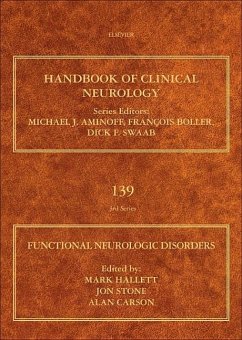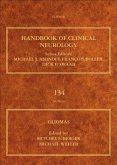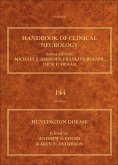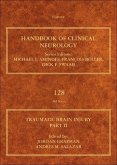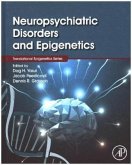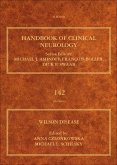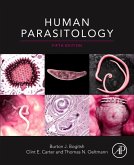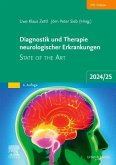Functional Neurologic Disorders
Volume 139
Herausgegeben:Hallett, Mark; Stone, Jon; Carson, Alan J
Functional Neurologic Disorders
Volume 139
Herausgegeben:Hallett, Mark; Stone, Jon; Carson, Alan J
- Gebundenes Buch
- Merkliste
- Auf die Merkliste
- Bewerten Bewerten
- Teilen
- Produkt teilen
- Produkterinnerung
- Produkterinnerung
Functional Neurologic Disorders, the latest volume in the Handbook of Clinical Neurology series, summarizes state-of-the-art research findings and clinical practice on this class of disorders at the interface between neurology and psychiatry. This 51-chapter volume offers an historical introduction, chapters on epidemiology and pathophysiolology, a large section on the clinical features of different type of functional neurologic symptoms and disorders (including functional movement disorders, non-epileptic seizures, dizziness, vision, hearing, speech and cognitive symptoms), and then…mehr
Andere Kunden interessierten sich auch für
![Gliomas Gliomas]() Gliomas183,99 €
Gliomas183,99 €![Spec - Handbook of Clinical Neurology, Volume 144, Huntington Disease, 12-Month Access, eBook Spec - Handbook of Clinical Neurology, Volume 144, Huntington Disease, 12-Month Access, eBook]() Spec - Handbook of Clinical Neurology, Volume 144, Huntington Disease, 12-Month Access, eBook191,99 €
Spec - Handbook of Clinical Neurology, Volume 144, Huntington Disease, 12-Month Access, eBook191,99 €![Traumatic Brain Injury, Part II Traumatic Brain Injury, Part II]() Traumatic Brain Injury, Part II289,99 €
Traumatic Brain Injury, Part II289,99 €![Neuropsychiatric Disorders and Epigenetics Neuropsychiatric Disorders and Epigenetics]() Neuropsychiatric Disorders and Epigenetics77,99 €
Neuropsychiatric Disorders and Epigenetics77,99 €![Wilson Disease Wilson Disease]() Wilson Disease191,99 €
Wilson Disease191,99 €![Human Parasitology Human Parasitology]() Burton J. BogitshHuman Parasitology81,99 €
Burton J. BogitshHuman Parasitology81,99 €![Diagnostik und Therapie neurologischer Erkrankungen Diagnostik und Therapie neurologischer Erkrankungen]() Diagnostik und Therapie neurologischer Erkrankungen84,00 €
Diagnostik und Therapie neurologischer Erkrankungen84,00 €-
-
-
Functional Neurologic Disorders, the latest volume in the Handbook of Clinical Neurology series, summarizes state-of-the-art research findings and clinical practice on this class of disorders at the interface between neurology and psychiatry. This 51-chapter volume offers an historical introduction, chapters on epidemiology and pathophysiolology, a large section on the clinical features of different type of functional neurologic symptoms and disorders (including functional movement disorders, non-epileptic seizures, dizziness, vision, hearing, speech and cognitive symptoms), and then concluding with approaches to therapy.
This group of internationally acclaimed experts in neurology, psychiatry, and neuroscience represent a broad spectrum of areas of expertise, chosen for their ability to write clearly and concisely with an eye toward a clinical audience. This HCN volume sets a new landmark standard for a comprehensive, multi-authored work dealing with functional neurologic disorders (also described as psychogenic, dissociative or conversion disorders).
Hinweis: Dieser Artikel kann nur an eine deutsche Lieferadresse ausgeliefert werden.
This group of internationally acclaimed experts in neurology, psychiatry, and neuroscience represent a broad spectrum of areas of expertise, chosen for their ability to write clearly and concisely with an eye toward a clinical audience. This HCN volume sets a new landmark standard for a comprehensive, multi-authored work dealing with functional neurologic disorders (also described as psychogenic, dissociative or conversion disorders).
Hinweis: Dieser Artikel kann nur an eine deutsche Lieferadresse ausgeliefert werden.
Produktdetails
- Produktdetails
- Handbook of Clinical Neurology Volume 139
- Verlag: Academic Press
- Artikelnr. des Verlages: C2013-0-23284-0
- Seitenzahl: 680
- Erscheinungstermin: 17. Oktober 2016
- Englisch
- Abmessung: 261mm x 194mm x 40mm
- Gewicht: 1771g
- ISBN-13: 9780128017722
- ISBN-10: 0128017724
- Artikelnr.: 45019117
- Herstellerkennzeichnung
- Libri GmbH
- Europaallee 1
- 36244 Bad Hersfeld
- gpsr@libri.de
- Handbook of Clinical Neurology Volume 139
- Verlag: Academic Press
- Artikelnr. des Verlages: C2013-0-23284-0
- Seitenzahl: 680
- Erscheinungstermin: 17. Oktober 2016
- Englisch
- Abmessung: 261mm x 194mm x 40mm
- Gewicht: 1771g
- ISBN-13: 9780128017722
- ISBN-10: 0128017724
- Artikelnr.: 45019117
- Herstellerkennzeichnung
- Libri GmbH
- Europaallee 1
- 36244 Bad Hersfeld
- gpsr@libri.de
Dr. Hallett is the President of the International Federation of Clinical Neurophysiology. He also serves as the Chief of the Human Motor Control Section, National Institute of Neurological Disorders and Stroke, National Institutes of Health, Bethesda, Maryland. Dr. Hallett obtained his M.D. at Harvard University, interned at the Peter Bent Brigham Hospital and trained in Neurology at Massachusetts General Hospital. He had fellowships in Neurophysiology at the National Institutes of Health and at the Institute of Psychiatry in London. From 1976 to 1984, Dr. Hallett was the Chief of the Clinical Neurophysiology Laboratory at the Brigham and Women's Hospital and worked up to Associate Professor of Neurology at Harvard Medical School. From 1984, he has been at the National Institute of Neurological Disorders and Stroke where he also served as Clinical Director of NINDS until July 2000. He is past President of the American Association of Neuromuscular and Electrodiagnostic Medicin
e and the International Parkinson and Movement Disorder Society and also served as Vice-President of the American Academy of Neurology. He has served as Editor of many journals and books and has had many honors. His work mainly deals with principles of motor control and the pathophysiology of movement disorders. Dr. Hallett's interests in motor control are wide-ranging, and include brain plasticity and its relevance to neurological disorders and the pathophysiology of dystonia, parkinsonism, and myoclonus. In recent years, he has become interested in disorders of volition, including tic and functional movement disorders.
e and the International Parkinson and Movement Disorder Society and also served as Vice-President of the American Academy of Neurology. He has served as Editor of many journals and books and has had many honors. His work mainly deals with principles of motor control and the pathophysiology of movement disorders. Dr. Hallett's interests in motor control are wide-ranging, and include brain plasticity and its relevance to neurological disorders and the pathophysiology of dystonia, parkinsonism, and myoclonus. In recent years, he has become interested in disorders of volition, including tic and functional movement disorders.
Section 1: History
Chapter 1: A brief history of hysteria: From the ancient to the modern
Chapter 2: Charcot, hysteria, and simulated disorders
Chapter 3: Neurologic approaches to hysteria, psychogenic and functional disorders from the late 19th century onwards
Chapter 4: Freud's hysteria and its legacy
Section 2: Epidemiology, etiology, and mechanism
Chapter 5: Epidemiology
Chapter 6: Neurophysiologic studies of functional neurologic disorders
Chapter 7: Imaging studies of functional neurologic disorders
Chapter 8: Dissociation and functional neurologic disorders
Chapter 9: Hypnosis as a model of functional neurologic disorders
Chapter 10: Psychologic theories in functional neurologic disorders
Chapter 11: Voluntary or involuntary? A neurophysiologic approach to functional movement disorders
Chapter 12: Neurobiologic theories of functional neurologic disorders
Chapter 13: Stress, childhood trauma, and cognitive functions in functional neurologic disorders
Chapter 14: Do (epi)genetics impact the brain in functional neurologic disorders?
Section 3: Symptoms (including signs and investigations)
Chapter 15: Assessment of patients with functional neurologic disorders
Chapter 16: The classification of conversion disorder (functional neurologic symptom disorder) in ICD and DSM
Chapter 17: Neurologic diagnostic criteria for functional neurologic disorders
Chapter 18: Functional limb weakness and paralysis
Chapter 19: Functional tremor
Chapter 20: Functional dystonia
Chapter 21: Functional jerks, tics, and paroxysmal movement disorders
Chapter 22: Psychogenic (functional) parkinsonism
Chapter 23: Functional gait disorder
Chapter 24: Functional sensory symptoms
Chapter 25: Nonepileptic seizures - subjective phenomena
Chapter 26: Nonepileptic seizures - objective phenomena
Chapter 27: Psychogenic nonepileptic seizures: EEG and investigation
Chapter 28: Functional coma
Chapter 29: Functional and simulated visual loss
Chapter 30: Functional eye movement disorders
Chapter 31: Functional facial and tongue movement disorders
Chapter 32: Functional auditory disorders
Chapter 33: Functional speech disorders: clinical manifestations, diagnosis, and management
Chapter 34: Functional voice disorders: Clinical presentations and differential diagnosis
Chapter 35: Psychologic/functional forms of memory disorder
Chapter 36: Functional (dissociative) retrograde amnesia
Chapter 37: Functional (psychogenic) dizziness
Chapter 38: Urologic symptoms and functional neurologic disorders
Chapter 39: Functional disorders of swallowing
Chapter 40: Pediatric functional neurologic symptoms
Chapter 41: Posttraumatic functional movement disorders
Chapter 42: Factitious disorders and malingering in relation to functional neurologic disorders
Section 4: Treatment
Chapter 43: Prognosis of functional neurologic disorders
Chapter 44: Explanation as treatment for functional neurologic disorders
Chapter 45: Physical treatment of functional neurologic disorders
Chapter 46: Psychologic treatment of functional neurologic disorders
Chapter 47: Hypnosis as therapy for functional neurologic disorders
Chapter 48: Nature of the placebo and nocebo effect in relation to functional neurologic disorders
Chapter 49: The role of placebo in the diagnosis and treatment of functional neurologic disorders
Chapter 50: Transcranial magnetic stimulation and sedation as treatment for functional neurologic disorders
Chapter 51: Inpatient treatment for functional neurologic disorders
Index
Chapter 1: A brief history of hysteria: From the ancient to the modern
Chapter 2: Charcot, hysteria, and simulated disorders
Chapter 3: Neurologic approaches to hysteria, psychogenic and functional disorders from the late 19th century onwards
Chapter 4: Freud's hysteria and its legacy
Section 2: Epidemiology, etiology, and mechanism
Chapter 5: Epidemiology
Chapter 6: Neurophysiologic studies of functional neurologic disorders
Chapter 7: Imaging studies of functional neurologic disorders
Chapter 8: Dissociation and functional neurologic disorders
Chapter 9: Hypnosis as a model of functional neurologic disorders
Chapter 10: Psychologic theories in functional neurologic disorders
Chapter 11: Voluntary or involuntary? A neurophysiologic approach to functional movement disorders
Chapter 12: Neurobiologic theories of functional neurologic disorders
Chapter 13: Stress, childhood trauma, and cognitive functions in functional neurologic disorders
Chapter 14: Do (epi)genetics impact the brain in functional neurologic disorders?
Section 3: Symptoms (including signs and investigations)
Chapter 15: Assessment of patients with functional neurologic disorders
Chapter 16: The classification of conversion disorder (functional neurologic symptom disorder) in ICD and DSM
Chapter 17: Neurologic diagnostic criteria for functional neurologic disorders
Chapter 18: Functional limb weakness and paralysis
Chapter 19: Functional tremor
Chapter 20: Functional dystonia
Chapter 21: Functional jerks, tics, and paroxysmal movement disorders
Chapter 22: Psychogenic (functional) parkinsonism
Chapter 23: Functional gait disorder
Chapter 24: Functional sensory symptoms
Chapter 25: Nonepileptic seizures - subjective phenomena
Chapter 26: Nonepileptic seizures - objective phenomena
Chapter 27: Psychogenic nonepileptic seizures: EEG and investigation
Chapter 28: Functional coma
Chapter 29: Functional and simulated visual loss
Chapter 30: Functional eye movement disorders
Chapter 31: Functional facial and tongue movement disorders
Chapter 32: Functional auditory disorders
Chapter 33: Functional speech disorders: clinical manifestations, diagnosis, and management
Chapter 34: Functional voice disorders: Clinical presentations and differential diagnosis
Chapter 35: Psychologic/functional forms of memory disorder
Chapter 36: Functional (dissociative) retrograde amnesia
Chapter 37: Functional (psychogenic) dizziness
Chapter 38: Urologic symptoms and functional neurologic disorders
Chapter 39: Functional disorders of swallowing
Chapter 40: Pediatric functional neurologic symptoms
Chapter 41: Posttraumatic functional movement disorders
Chapter 42: Factitious disorders and malingering in relation to functional neurologic disorders
Section 4: Treatment
Chapter 43: Prognosis of functional neurologic disorders
Chapter 44: Explanation as treatment for functional neurologic disorders
Chapter 45: Physical treatment of functional neurologic disorders
Chapter 46: Psychologic treatment of functional neurologic disorders
Chapter 47: Hypnosis as therapy for functional neurologic disorders
Chapter 48: Nature of the placebo and nocebo effect in relation to functional neurologic disorders
Chapter 49: The role of placebo in the diagnosis and treatment of functional neurologic disorders
Chapter 50: Transcranial magnetic stimulation and sedation as treatment for functional neurologic disorders
Chapter 51: Inpatient treatment for functional neurologic disorders
Index
Section 1: History
Chapter 1: A brief history of hysteria: From the ancient to the modern
Chapter 2: Charcot, hysteria, and simulated disorders
Chapter 3: Neurologic approaches to hysteria, psychogenic and functional disorders from the late 19th century onwards
Chapter 4: Freud's hysteria and its legacy
Section 2: Epidemiology, etiology, and mechanism
Chapter 5: Epidemiology
Chapter 6: Neurophysiologic studies of functional neurologic disorders
Chapter 7: Imaging studies of functional neurologic disorders
Chapter 8: Dissociation and functional neurologic disorders
Chapter 9: Hypnosis as a model of functional neurologic disorders
Chapter 10: Psychologic theories in functional neurologic disorders
Chapter 11: Voluntary or involuntary? A neurophysiologic approach to functional movement disorders
Chapter 12: Neurobiologic theories of functional neurologic disorders
Chapter 13: Stress, childhood trauma, and cognitive functions in functional neurologic disorders
Chapter 14: Do (epi)genetics impact the brain in functional neurologic disorders?
Section 3: Symptoms (including signs and investigations)
Chapter 15: Assessment of patients with functional neurologic disorders
Chapter 16: The classification of conversion disorder (functional neurologic symptom disorder) in ICD and DSM
Chapter 17: Neurologic diagnostic criteria for functional neurologic disorders
Chapter 18: Functional limb weakness and paralysis
Chapter 19: Functional tremor
Chapter 20: Functional dystonia
Chapter 21: Functional jerks, tics, and paroxysmal movement disorders
Chapter 22: Psychogenic (functional) parkinsonism
Chapter 23: Functional gait disorder
Chapter 24: Functional sensory symptoms
Chapter 25: Nonepileptic seizures - subjective phenomena
Chapter 26: Nonepileptic seizures - objective phenomena
Chapter 27: Psychogenic nonepileptic seizures: EEG and investigation
Chapter 28: Functional coma
Chapter 29: Functional and simulated visual loss
Chapter 30: Functional eye movement disorders
Chapter 31: Functional facial and tongue movement disorders
Chapter 32: Functional auditory disorders
Chapter 33: Functional speech disorders: clinical manifestations, diagnosis, and management
Chapter 34: Functional voice disorders: Clinical presentations and differential diagnosis
Chapter 35: Psychologic/functional forms of memory disorder
Chapter 36: Functional (dissociative) retrograde amnesia
Chapter 37: Functional (psychogenic) dizziness
Chapter 38: Urologic symptoms and functional neurologic disorders
Chapter 39: Functional disorders of swallowing
Chapter 40: Pediatric functional neurologic symptoms
Chapter 41: Posttraumatic functional movement disorders
Chapter 42: Factitious disorders and malingering in relation to functional neurologic disorders
Section 4: Treatment
Chapter 43: Prognosis of functional neurologic disorders
Chapter 44: Explanation as treatment for functional neurologic disorders
Chapter 45: Physical treatment of functional neurologic disorders
Chapter 46: Psychologic treatment of functional neurologic disorders
Chapter 47: Hypnosis as therapy for functional neurologic disorders
Chapter 48: Nature of the placebo and nocebo effect in relation to functional neurologic disorders
Chapter 49: The role of placebo in the diagnosis and treatment of functional neurologic disorders
Chapter 50: Transcranial magnetic stimulation and sedation as treatment for functional neurologic disorders
Chapter 51: Inpatient treatment for functional neurologic disorders
Index
Chapter 1: A brief history of hysteria: From the ancient to the modern
Chapter 2: Charcot, hysteria, and simulated disorders
Chapter 3: Neurologic approaches to hysteria, psychogenic and functional disorders from the late 19th century onwards
Chapter 4: Freud's hysteria and its legacy
Section 2: Epidemiology, etiology, and mechanism
Chapter 5: Epidemiology
Chapter 6: Neurophysiologic studies of functional neurologic disorders
Chapter 7: Imaging studies of functional neurologic disorders
Chapter 8: Dissociation and functional neurologic disorders
Chapter 9: Hypnosis as a model of functional neurologic disorders
Chapter 10: Psychologic theories in functional neurologic disorders
Chapter 11: Voluntary or involuntary? A neurophysiologic approach to functional movement disorders
Chapter 12: Neurobiologic theories of functional neurologic disorders
Chapter 13: Stress, childhood trauma, and cognitive functions in functional neurologic disorders
Chapter 14: Do (epi)genetics impact the brain in functional neurologic disorders?
Section 3: Symptoms (including signs and investigations)
Chapter 15: Assessment of patients with functional neurologic disorders
Chapter 16: The classification of conversion disorder (functional neurologic symptom disorder) in ICD and DSM
Chapter 17: Neurologic diagnostic criteria for functional neurologic disorders
Chapter 18: Functional limb weakness and paralysis
Chapter 19: Functional tremor
Chapter 20: Functional dystonia
Chapter 21: Functional jerks, tics, and paroxysmal movement disorders
Chapter 22: Psychogenic (functional) parkinsonism
Chapter 23: Functional gait disorder
Chapter 24: Functional sensory symptoms
Chapter 25: Nonepileptic seizures - subjective phenomena
Chapter 26: Nonepileptic seizures - objective phenomena
Chapter 27: Psychogenic nonepileptic seizures: EEG and investigation
Chapter 28: Functional coma
Chapter 29: Functional and simulated visual loss
Chapter 30: Functional eye movement disorders
Chapter 31: Functional facial and tongue movement disorders
Chapter 32: Functional auditory disorders
Chapter 33: Functional speech disorders: clinical manifestations, diagnosis, and management
Chapter 34: Functional voice disorders: Clinical presentations and differential diagnosis
Chapter 35: Psychologic/functional forms of memory disorder
Chapter 36: Functional (dissociative) retrograde amnesia
Chapter 37: Functional (psychogenic) dizziness
Chapter 38: Urologic symptoms and functional neurologic disorders
Chapter 39: Functional disorders of swallowing
Chapter 40: Pediatric functional neurologic symptoms
Chapter 41: Posttraumatic functional movement disorders
Chapter 42: Factitious disorders and malingering in relation to functional neurologic disorders
Section 4: Treatment
Chapter 43: Prognosis of functional neurologic disorders
Chapter 44: Explanation as treatment for functional neurologic disorders
Chapter 45: Physical treatment of functional neurologic disorders
Chapter 46: Psychologic treatment of functional neurologic disorders
Chapter 47: Hypnosis as therapy for functional neurologic disorders
Chapter 48: Nature of the placebo and nocebo effect in relation to functional neurologic disorders
Chapter 49: The role of placebo in the diagnosis and treatment of functional neurologic disorders
Chapter 50: Transcranial magnetic stimulation and sedation as treatment for functional neurologic disorders
Chapter 51: Inpatient treatment for functional neurologic disorders
Index

